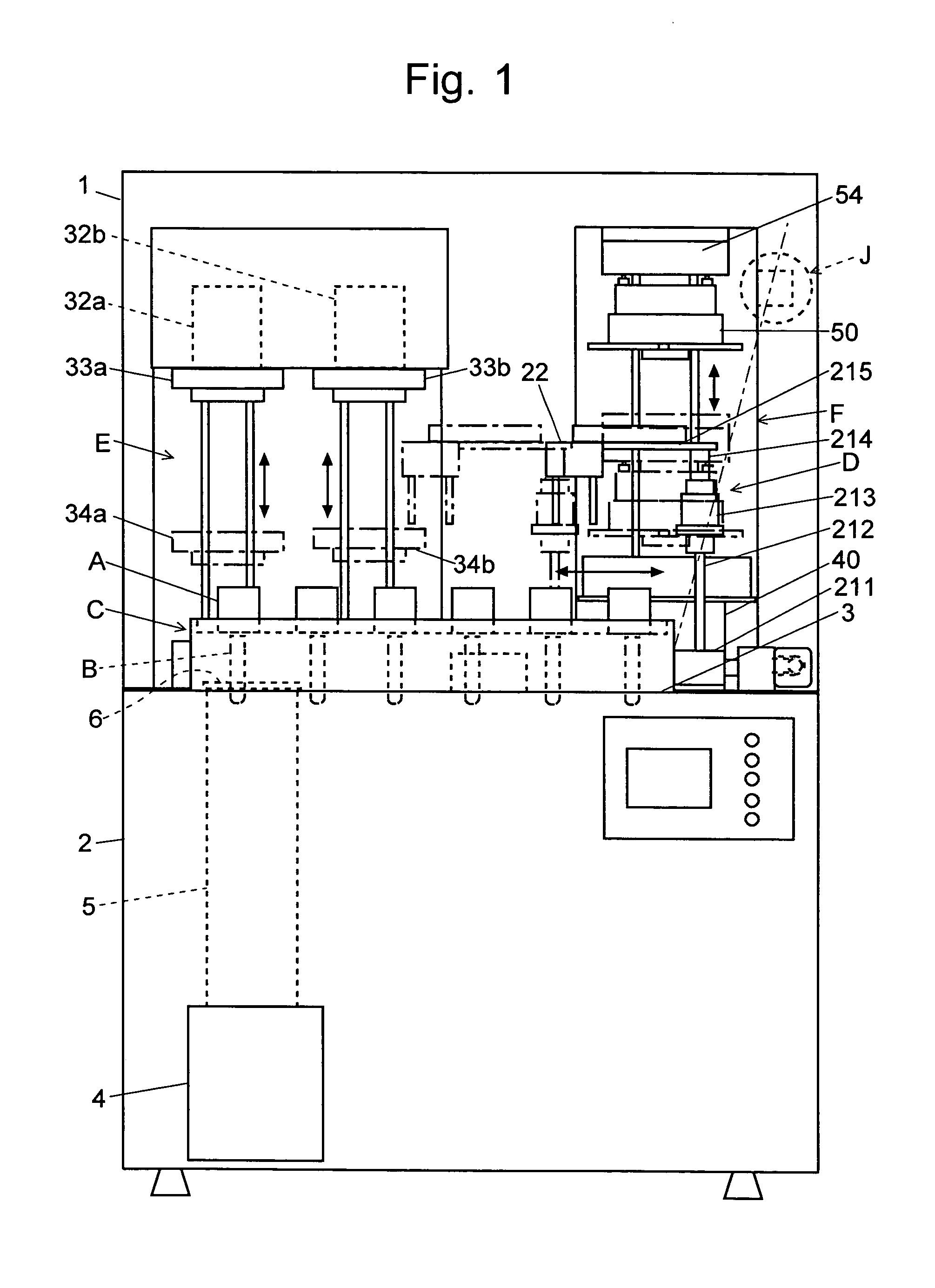Apparatus for casting dental prosthesis
a dental prosthesis and casting technology, applied in the field of casting dental prostheses, can solve the problems of inability to obtain the desired quality of the prosthesis, defective prosthesis pieces, and time-consuming and labor-intensive casting work, and achieve the effects of easy inspection, high degree of safety, and large imag
- Summary
- Abstract
- Description
- Claims
- Application Information
AI Technical Summary
Benefits of technology
Problems solved by technology
Method used
Image
Examples
Embodiment Construction
[0073]An automatic casting apparatus as an embodiment of the present invention is described below, referring to the attached drawings.
[0074]As shown in FIGS. 1 and 2, the casting apparatus has a long rectangular body, the lower part of which is a box 2 containing a control circuit for controlling the mechanical and electrical operations, and mechanisms for supplying compressed air. The top of the box 2 serves as a table 3 on which several devices are mounted for various kinds of work, which will be described later. The top of the table 3 is covered with a cover 1 having a transparent door (not shown) at its front side. The cover 1 ensures the safety of the operator, and prevents litters, dusts and other foreign matters from falling onto the table 3.
[0075]On the table 3, a ring / crucible-placing platform C, having the capacity of six rings A and six crucibles B, is provided at the front, and a conveyer D for holding and conveying the ring A or crucible B is provided behind the ring / cr...
PUM
| Property | Measurement | Unit |
|---|---|---|
| Force | aaaaa | aaaaa |
Abstract
Description
Claims
Application Information
 Login to View More
Login to View More - R&D
- Intellectual Property
- Life Sciences
- Materials
- Tech Scout
- Unparalleled Data Quality
- Higher Quality Content
- 60% Fewer Hallucinations
Browse by: Latest US Patents, China's latest patents, Technical Efficacy Thesaurus, Application Domain, Technology Topic, Popular Technical Reports.
© 2025 PatSnap. All rights reserved.Legal|Privacy policy|Modern Slavery Act Transparency Statement|Sitemap|About US| Contact US: help@patsnap.com



